Greensboro, NC Pollen and Allergy Report for Summer 2023
Pollen Allergy Trends in Greensboro, NC
When is pollen lowest in Greensboro, NC?

February
Lowest month total PPM
Avg. PPM
When is pollen highest in Greensboro, NC?

April
Highest month total PPM
Avg. PPM
How does pollen in Greensboro, NC compare to North Carolina?
Greensboro has a lower average PPM than the state of North Carolina.
Greensboro yearly avg PPM:
North Carolina yearly avg PPM:
How does pollen in Greensboro, NC compare to the USA?
Greensboro has a higher average PPM than the USA.
Greensboro yearly avg PPM:
USA yearly avg PPM:
Is pollen worse this year in Greensboro, NC?
Spring 2023 was better than spring 2022.
Spring 2023 PPM:
Spring 2022 PPM:
Average PPM in Greensboro, NC
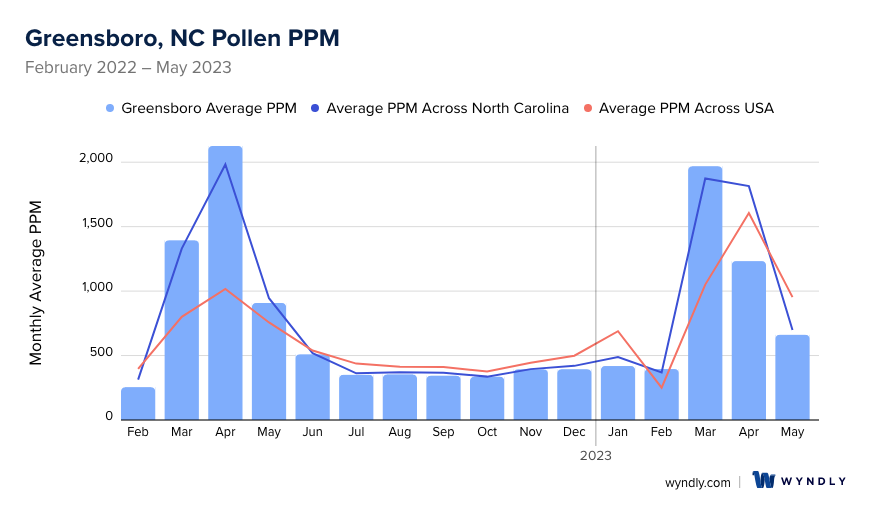
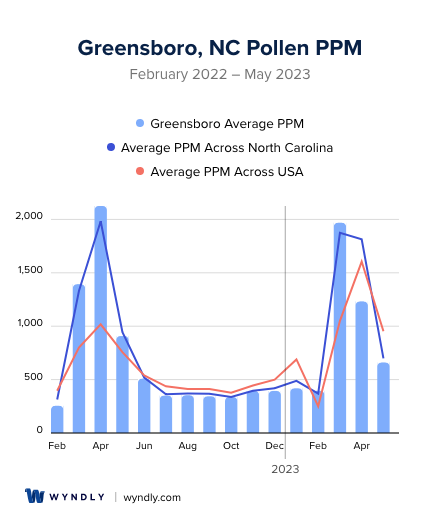
Greensboro, NC Pollen and Allergy Breakdown by Month
Grass
When is grass pollen highest in Greensboro, NC?
April has the highest grass pollen in Greensboro, NC with an average PPM of
When is grass pollen lowest in Greensboro, NC?
December has the lowest grass pollen in Greensboro, NC with an average PPM of
Tree
When is tree pollen highest in Greensboro, NC?
March has the highest tree pollen in Greensboro, NC with an average PPM of
When is tree pollen lowest in Greensboro, NC?
July has the lowest tree pollen in Greensboro, NC with an average PPM of
Weed
When is weed pollen highest in Greensboro, NC?
April has the highest weed pollen in Greensboro, NC with an average PPM of
When is weed pollen lowest in Greensboro, NC?
February has the lowest weed pollen in Greensboro, NC with an average PPM of
Greensboro, NC Pollen Monthly Breakdown by Pollen Type
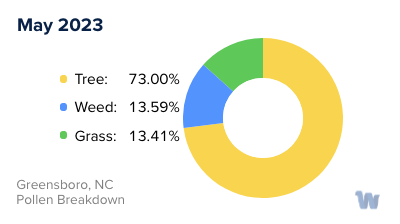
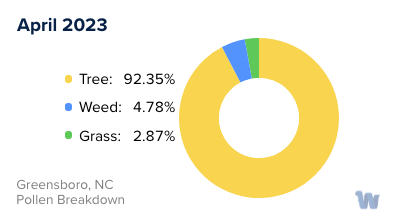
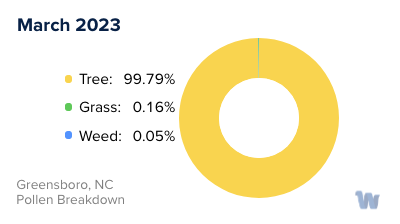
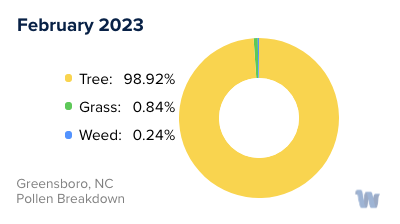
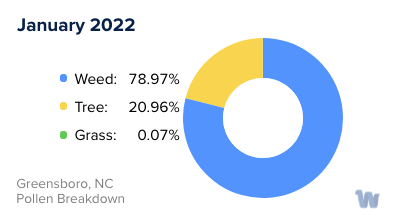
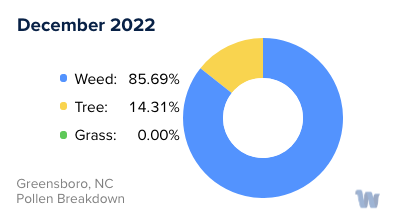
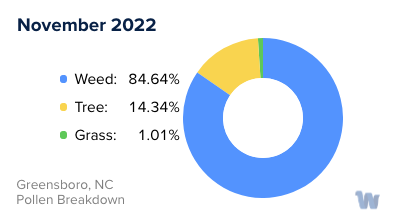
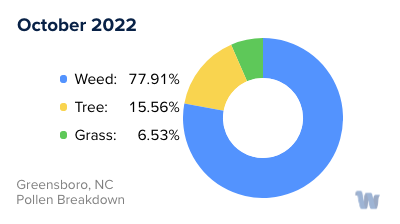
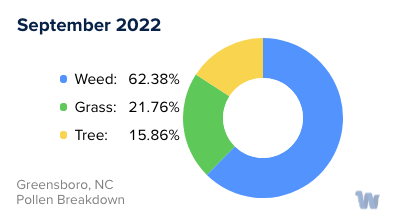
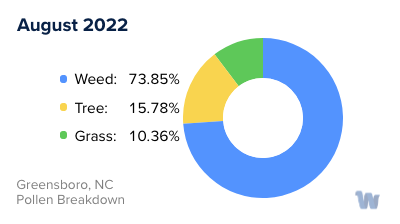
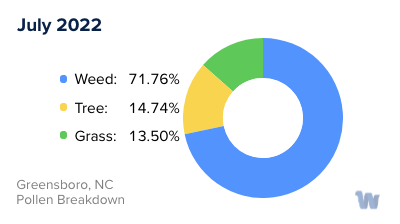
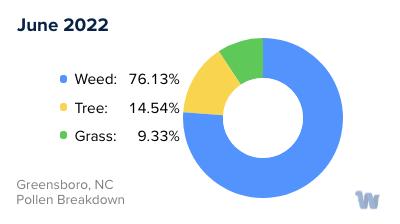
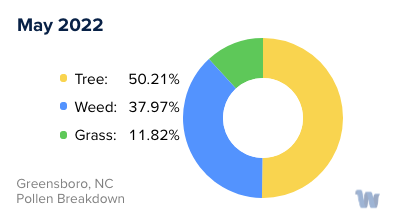
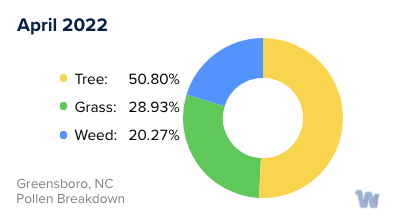
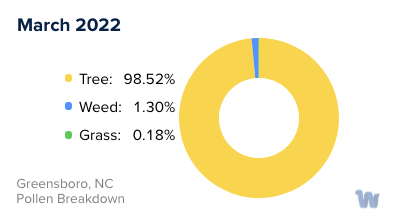
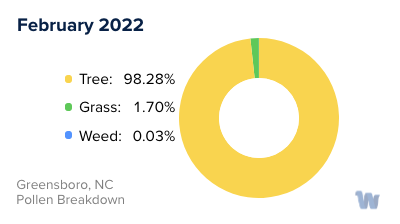
Pollen and Hay Fever in Greensboro, NC
In Greensboro, North Carolina, pollen allergies can be a year-round concern for many residents, but they tend to be most prominent during the spring and fall seasons. The onset of these allergies typically begins in late February or early March, thanks to North Carolina's milder winters. However, the height of the pollen season often occurs in April, May, and September. During these peak months, the air is often saturated with a variety of pollen types, each with its unique ability to trigger allergic reactions.
Three main types of pollen are to blame for the majority of pollen-related allergies in Greensboro: tree pollen, grass pollen, and ragweed pollen. Each has a different seasonal pattern, which can lead to an extended allergy season for those sensitive to multiple types.
Tree pollen, one of the primary allergens, is predominantly released in the spring. A variety of trees common in the Greensboro area contribute to this pollen output, including river birch, hickory, oak, American beech, and yellow polar.
As the tree pollen season starts to wane, grass pollen takes the stage. During the summer months, grasses such as Bermuda grass, Zoysia grass, ryegrass, and fescue grass release their pollen, which can also trigger allergic reactions in sensitive individuals.
Lastly, as the fall season approaches, ragweed pollen becomes the main concern. Ragweed tends to release its pollen in late summer and continues until the end of the allergy season.
Understanding the ebb and flow of these different types of pollen throughout the year can help those with pollen allergies prepare for the seasons ahead. By staying informed, residents can better anticipate periods of increased pollen counts and take steps to manage their exposure.


